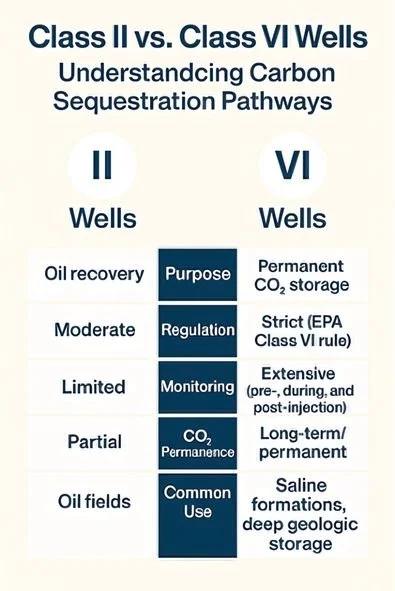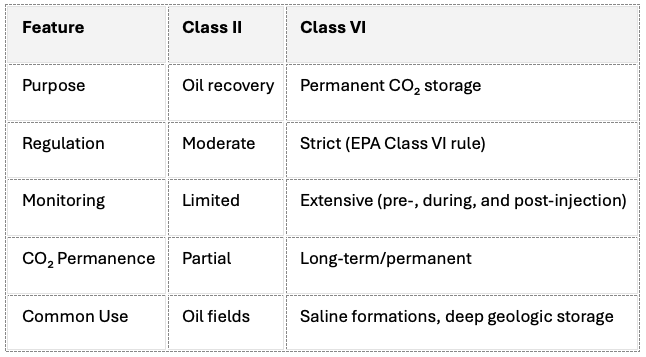Class II vs. Class VI Wells: Understanding Carbon Sequestration Pathways
Carbon sequestration is a critical strategy in the fight against climate change, and the U.S. Environmental Protection Agency (EPA) regulates underground injection wells through its Underground Injection Control (UIC) Program.
Two key well classifications—Class II and Class VI—play distinct roles in managing carbon dioxide (CO₂) underground.
What Are Class II Wells?
Class II wells are primarily used in the oil and gas industry. They inject fluids associated with:
Enhanced oil recovery (EOR)
Disposal of brine and other fluids from oil and gas production (Acid Gas Injection)
Carbon Sequestration via Class II:
EOR - CO₂ is injected into oil reservoirs to increase pressure and extract more oil. While some CO₂ remains underground, the primary goal is oil recovery, not permanent carbon storage.
Acid Gas Injection (AGI) - Wells that inject waste products (typically CO₂ and H2S) from oil and gas operations and dispose of them in deep reservoirs
These wells are regulated under less stringent standards than Class VI wells.
What Are Class VI Wells?
Class VI wells are designed explicitly for long-term geologic sequestration of CO₂. Their purpose is to permanently store CO₂ in deep underground formations such as saline aquifers.
Key Features:
Subject to rigorous EPA standards under the Safe Drinking Water Act
Require detailed site characterization, monitoring, and post-injection care
Focused on protecting underground sources of drinking water (USDWs)


